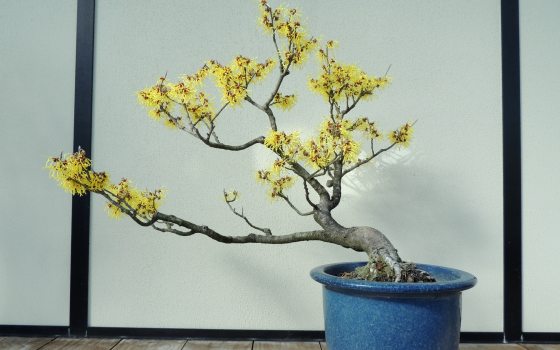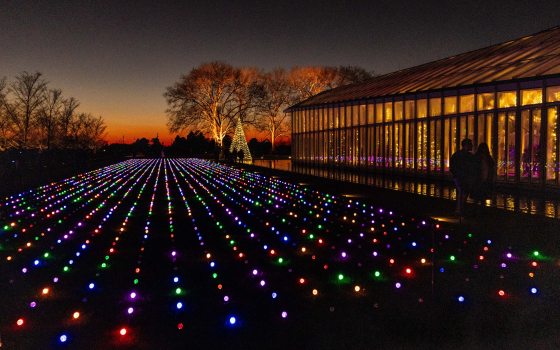The Japanese art of bonsai originated in China as the practice known as penjing. Early in Chinese history, trees and other plants were collected from the wild and grown in containers. The practice moved to Japan many centuries ago through social and economic interaction with China. Over the years, both countries developed various techniques that we continue to use in creating bonsai today. The Japanese word bonsai translates to "tree in a shallow pot."
Though some plants in our collection date back to the early 1900s, bonsai were not part of our displays during the time of our founder, Pierre S. du Pont. In 1959, five years after Pierre’s death, renowned bonsai artist Yuji Yoshimura presented a class in our Continuing Education program. It was so well received that our staff members decided we should have some bonsai of our own.

Bonsai class at Longwood Gardens, presented by Yuji Yoshimura in 1959. Photo by Gottlieb Hampfler.

Yuji Yoshimura demonstrating in class.
Starting with 13 trees purchased from Yuji, our collection has grown to 40 trees and has changed throughout the years under the guidance of five different curators. Our Bonsai Display is both an educational exhibit as well as a beautiful display. The small collection plays off of species that grow in our local landscape. Some trees in our collection are being developed or are undergoing a style change, and sometimes we place plants on display while they are undergoing training, to show wires and weights used to force branches into the desired form.
The idea behind bonsai is to imitate nature and the beauty of ancient trees with their rough bark and massive, expanding branches. To recreate the appearance of an older tree in miniature is to create a bonsai. Bonsai is a disciplined practice that combines art and horticulture to create a living sculpture. The plants require continuous care to develop and maintain the desired form.
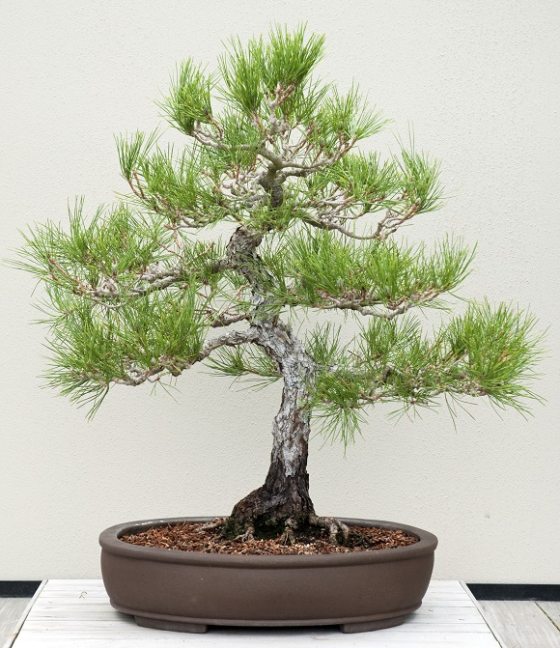
Japanese black pine (Pinus thunbergii) at Longwood Gardens, photographed in 2010 by Larry Albee.
Bonsai are grown in small containers and pruned to keep their form. Root pruning is necessary every few years to keep the tree small and growing happily.
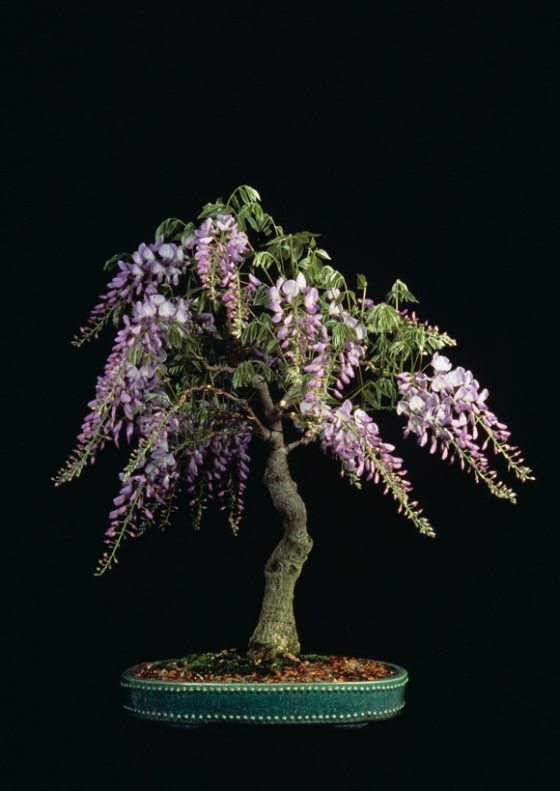
Chinese wisteria (Wisteria sinensis) photographed at Longwood in 1994.
The container or pot is also part of the design. It should harmonize with the style of the bonsai such as this teal, glazed pot that contrasts beautifully with the lavender wisteria blossoms.
Some trees have been developed here at Longwood while other bonsai were acquired through purchase or donation.
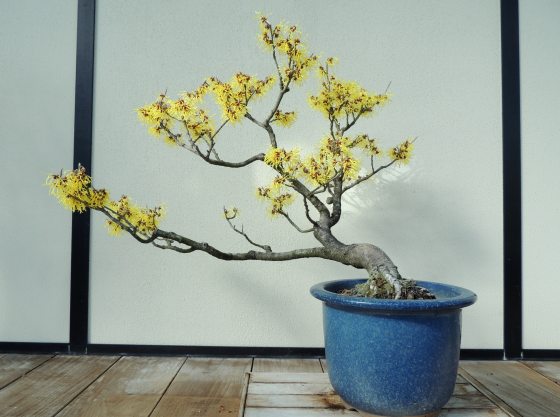
Witch-hazel (Hamamelis intermedia), a gift from the Brandywine Bonsai Society for our centennial in 2006. Photo by Cathy Matos.
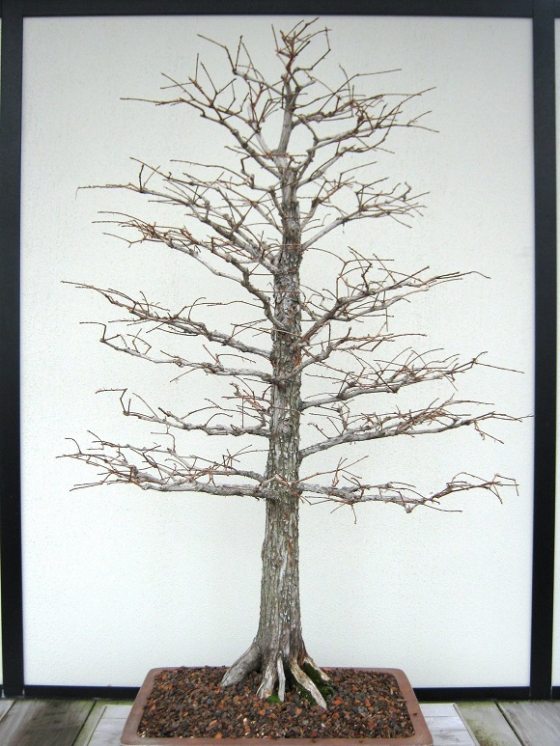
Bald-cypress (Taxodium distichum) dormant in winter. Training on this plant began at Longwood in 1988. Photo by Mike Columbus.
I invite you to visit and enjoy this year-round display and see the trees in each season. Look for new specimens as we train and develop more trees in our collection.
